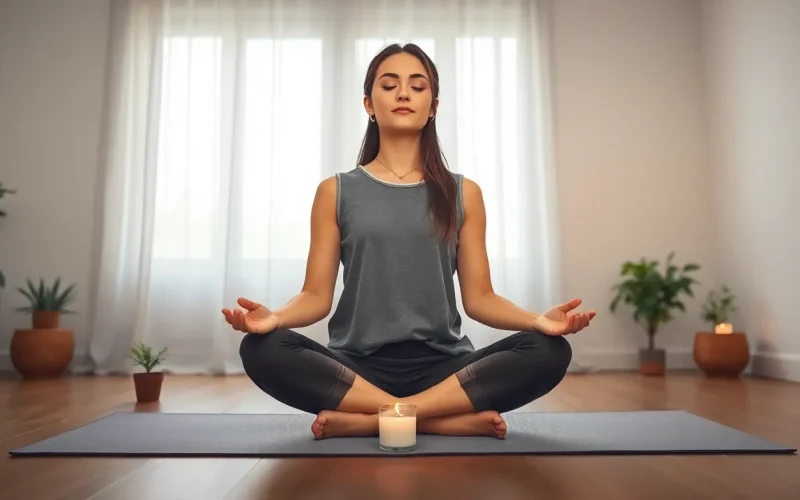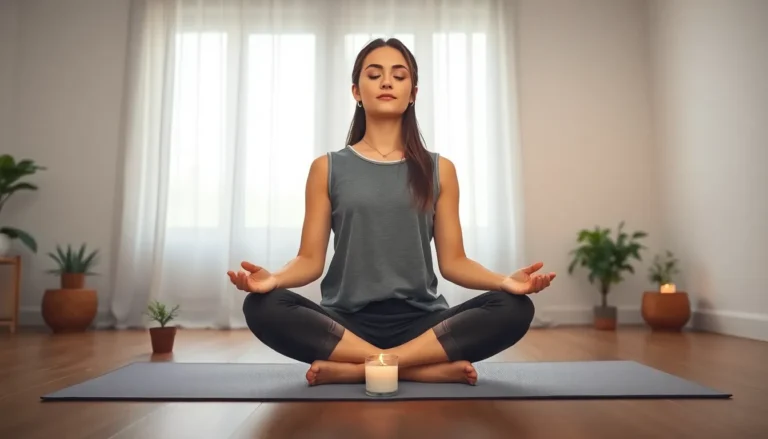Table of Contents
ToggleIn today’s fast-paced world, finding a moment of peace can feel like searching for a needle in a haystack. But what if he told you that just two minutes could transform your chaotic day into a serene oasis? Enter the two-minute mindfulness script—a quick and effective way to hit the pause button on life’s madness.
Understanding Mindfulness
Mindfulness represents a state of focused awareness on the present moment. This practice encourages individuals to acknowledge their thoughts and feelings without judgment.
What Is Mindfulness?
Mindfulness involves paying intentional attention to immediate experiences. It encompasses techniques such as meditation, breathing exercises, and self-reflection. By promoting presence, mindfulness enables individuals to connect with their surroundings, fostering a deeper understanding of their thoughts and emotions. This awareness helps combat stress, anxiety, and distraction, enhancing overall well-being.
Benefits of Practicing Mindfulness
Practicing mindfulness yields numerous advantages. It can improve emotional regulation, increasing resilience against stress. Studies indicate that mindfulness may enhance focus, productivity, and creativity, benefiting personal and professional life. Additionally, individuals frequently report better sleep quality and reduced symptoms of anxiety and depression. By committing to just two minutes of mindfulness each day, practitioners can experience these benefits, creating a positive impact on daily routines.
The Importance of Short Mindfulness Practices

Short mindfulness practices significantly enhance mental well-being. Dedicating just two minutes allows individuals to center themselves, fostering a consistent habit that integrates easily into daily life.
Why Two Minutes?
Two minutes provides an accessible timeframe for busy individuals. This brief duration reduces barriers to entry, enabling more people to engage in mindfulness without feeling overwhelmed. Research demonstrates that even short periods of focused awareness can improve emotional regulation and decrease anxiety. Incorporating two-minute mindfulness sessions can lead to increased calmness throughout the day, making it simpler to handle challenges as they arise.
Incorporating Mindfulness Into a Busy Schedule
Incorporating mindfulness into a busy schedule proves effective with small adjustments. Individuals can practice during breaks, while commuting, or even just before a meeting. Simple techniques, such as deep breathing or focusing on sensory experiences, can be done in any environment. Setting reminders to pause for two minutes can also create a habit. These practices, when integrated seamlessly into a daily routine, enhance overall awareness and provide moments of peace amid chaos.
Crafting a 2 Minute Mindfulness Script
Creating a two-minute mindfulness script involves focusing on key elements that facilitate a brief yet effective practice.
Key Elements of a Mindfulness Script
- Guided Breathing: Begin with deep, intentional breaths. Inhale for a count of four, hold for four, exhale for four. Repeat this cycle to anchor attention.
- Focused Awareness: Direct attention to the present moment. Acknowledge surroundings, sounds, and sensations without judgment.
- Body Scan: Briefly assess physical sensations. Start from the head, moving down to the toes, encouraging release and relaxation in each area.
- Positive Affirmations: Incorporate affirmations to foster acceptance and calmness. Examples include “I am present” or “I embrace this moment.”
- Closing: Transition back to the environment. Encourage gradual re-engagement, suggesting participants open their eyes slowly and return their focus.
Sample 2 Minute Mindfulness Script
“Begin by finding a comfortable position. Inhale deeply through your nose for four counts, hold for four counts, then exhale through your mouth for four counts. Focus on your breath. Notice how your chest rises and falls. Become aware of any distractions. Acknowledge them without judgment and return to your breath.
Gently scan your body from head to toe. Recognize areas of tension and consciously relax them. Repeat the affirmation, ‘I am present in this moment.’
Tips for Effective Mindfulness Practice
Mindfulness practice becomes more effective with the right techniques. Implementing these tips enhances the overall experience.
Creating a Calm Environment
Creating a calm environment significantly boosts mindfulness practice. Choose a quiet space free from distractions. Adjust the lighting to a soft level that promotes relaxation. Incorporate comfortable seating or cushioning to support physical ease. Adding calming elements like plants, candles, or soothing sounds can further enrich the atmosphere. Ensure the temperature is comfortable, as physiological comfort fosters better focus. Opt for a space where it’s easy to close doors or use noise-canceling headphones to minimize interruptions. By cultivating this serene setting, individuals can achieve a more profound, uninterrupted mindfulness experience.
Staying Present and Focused
Staying present and focused during mindfulness practice enhances effectiveness. Start by concentrating on breathing, allowing thoughts to come and go without attachment. Use a simple mantra or word to help anchor attention in the moment. Notice the sensations in the body, starting from the feet and moving to the head, to ground oneself. Acknowledge any distractions without judgment, gently guiding focus back to the breath or sensations. Using a timer can help create a structure for the practice, eliminating worries about time management. By consistently redirecting attention to the present, individuals cultivate stronger mindfulness habits and deeper awareness.
Embracing a two-minute mindfulness script can profoundly impact one’s daily life. By dedicating just a brief moment to focused awareness, individuals can cultivate a sense of calm amidst the chaos. This practice not only enhances emotional well-being but also fosters resilience and clarity.
Integrating mindfulness into a busy schedule is easier than it seems. With simple techniques and a structured approach, anyone can find peace in just two minutes. The journey toward mindfulness doesn’t require extensive time commitments. Instead, it invites individuals to pause and reconnect with the present, leading to lasting benefits.
In a world that often feels overwhelming, these moments of mindfulness can serve as vital tools for maintaining balance and enhancing overall mental health.




